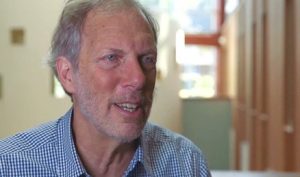
Prof.dr. Robert Pollin
Pundits and economic models predict that if nothing changes in the next two years on the economic front, Donald Trump will be re-elected in 2020 by a bigger margin than in 2016. To be sure, the economy is usually the top priority for voters heading into a presidential election, and the U.S. economy appears on paper to be doing well since Trump moved into the White House. According to the Bureau of Economic Analysis, real gross domestic product (GDP) increased at an annual rate of 3.2 percent in the first quarter of 2019 (real GDP grew by 2.2 percent in the fourth quarter of 2018), and the national unemployment rate is at a low 3.8 percent, with applications for unemployment benefits having declined to a 49-year low.
Nonetheless, while the economy looks strong, the economic condition of most Americans is anything but rosy. And, according to a Federal Reserve’s “Report on the Economic Well-Being of U.S. Households in 2018,” roughly 40 percent of households would not be able to cover a $400 “unexpected expense.”
At the same time, the majority of Americans think that the economic system benefits mostly the wealthy, and want to see the government do something about this situation.
As such, the question is whether Democratic presidential candidates have the vision and the boldness to put structural economic reforms on top of their pre-election campaign. Bernie Sanders and Elizabeth Warren have already positioned themselves as the ideas candidates for fixing the economy, although Wall Street Democrats will clearly oppose both of them. In the absence of a plan to abolish capitalism, drastic reforms to make it more equitable are a necessary precondition for the economic well-being of the majority of people in the U.S. — reforms that would likely prove to be detrimental to the economic interests of the super-rich, who are intent on accumulating ever higher amounts of wealth. Yet, it is unclear what sort of reforms deserve top priority in today’s U.S. economy. To answer that question, we interviewed Robert Pollin, distinguished professor of economics and co-director of the Political Economy Research Institute at the University of Massachusetts-Amherst.
C.J. Polychroniou: Bob, the U.S. economy is said to be booming, although Democrats attribute this fact to the policies of the Obama administration. Firstly, is the U.S. economy in such a good shape as it appears to be on paper? Secondly, for how long can the Democrats go on giving credit to Obama for today’s signs of a strong economy?
Robert Pollin: First of all, based on the most standard measure of overall economic performance, the growth rate of Gross Domestic Product (GDP), the U.S. economy has not been booming under Trump. Indeed, over the two full years under Trump, 2017-18, real economic growth (adjusted for inflation) averaged 2.5 percent per year. This is no better than the average for the full eight years since the Great Recession officially ended in 2010. Over the 57-year period prior to the 2008 Great Recession (1950-2007), U.S. real economic growth averaged 3.4 percent per year. The Trump economy obviously hasn’t come close to reaching this long-term average growth trend.
It is true that the official unemployment rate is at a historic low, at 3.8 percent of the labor force. However, let’s also consider a broader official measure of unemployment coming from the U.S. Labor Department, one which includes both the “underemployed” — i.e., people in part-time positions but seeking full-time work — as well as people who have become discouraged from looking for a job due to lack of success. By this measure, the unemployment rate rises to 7.3 percent. If we also add in the roughly 5 million people who have dropped out of the labor market following the Great Recession, that would bring the unemployment rate to 10.3 percent. So while labor market conditions are indeed far better now than they were 10 years ago, as we were just coming out of the Great Recession, there is still a lot of distress among people trying to get jobs, much less good jobs.
The Obama administration, along with the Federal Reserve, does deserve credit for helping to avoid a total financial collapse in 2008 that could have led to a Depression as severe as the 1930s. Who knows where we would be today if, a decade ago, the unemployment rate had risen to, say 25 percent, as it did in the 1930s, versus 10 percent during the Great Recession.
Some Democrats seek to generate greater support among voters by focusing on the stagnant wage narrative. What are the economics reasons behind stagnant wages, and is wage stagnation in itself a winning strategy?
Wage stagnation has been a defining feature of economic reality under neoliberal capitalism for almost 50 years now, in the U.S. and elsewhere. The average real wage for non-supervisory workers in the U.S. was about $23 an hour in 1972. (That is the wage in 1972 expressed in today’s dollars, after adjusting for inflation). As of 2016, it was about $22 an hour, 4 percent lower. Meanwhile, average labor productivity more than doubled between 1972 and 2016. If the average wage had kept up with productivity over this 44-year period, the average worker would be earning $49 an hour today. In other words, the gains from rising productivity have flowed upward, primarily to the top 1 percent. This is the single most important factor driving the overall rise in U.S. inequality.
The basic explanation for wage stagnation is straightforward — the loss of bargaining power by workers. This is another central feature of neoliberalism. Workers have lost bargaining power for several interrelated reasons. First, unions have become historically weak, and are therefore unable to give workers the support they need in bargaining. In turn, part of the reason that unions have been weakened is that corporations have become, over time, much more aggressive in asserting their power — through, for example, outsourcing production jobs to low-wage economies. Businesses can credibly threaten to their employees: “If you want a raise, then, fine, we outsource to China.” This is what former Federal Reserve Chair Alan Greenspan called the “traumatized worker” effect back in the mid-1990s. This loss of worker strength has, in turn, led to labor laws that increasingly favor capital over labor, including the notorious 2018 Supreme Court decision in the Janus case that prohibits unions from requiring workers to receive fees for negotiating on behalf of the workers.
Should the Democrats focus on wage stagnation as an issue? Absolutely, yes. Wage stagnation has been a major driver alienating working people who traditionally supported the Democratic Party. Trump has capitalized on this alienation by blaming immigrants for “stealing” jobs from U.S. residents. The Democrats need to explain the real reasons behind the persistence of wage stagnation and consequent rise of inequality.
Today’s progressive youth in the United States have made “good jobs” a central focus of their political and social demands. What would constitute “good jobs” in a reformed U.S. economy?
There are three basic components to a “good job”: good compensation levels, including wages and benefits; opportunities for advancement within a firm; and significant autonomy — i.e., decision-making power — in the workplace. All three features are critical. Considering the last feature, firms that operate with a significant degree of worker self-management perform at least as well (if not better) than traditional top-down hierarchical firms, according to standard measures such as productivity.
Household debt is once again on the rise, after several years of sharp decline due to the recession that followed the 2007-08 financial crisis. Is this still related to stagnant wages, or is it part of a larger story related to the culture of U.S. consumerism and the outreach of financialization in every aspect of U.S. economy and society?
In fact, household debt rose sharply as of 2008 to nearly 100 percent of GDP, then fell continuously to about 80 percent of GDP through 2016. The increase over the past two years in this ratio has been modest. More to the point, just before the Great Recession, households were spending over 13 percent of their income to cover their interest and principal payments on their debts. Now they are spending less than 10 percent. In general, though, the rise of household debt, starting in the 1980s, was certainly tied to wage stagnation as one major factor. Working-class households took on more debt in an effort to maintain their living standard in the face of wage stagnation. But there was a second factor also contributing to the rise of household debt. This was at the other end of the income distribution. Wealthy households borrowed more to engage in speculative financial market activities. Both factors still operate today.
Those who oppose a Green New Deal do so by citing its potentially adverse effects on jobs and growth. Yet, the United Nations Environment Programme sees the green economy as a “net generator of jobs, adequate wages, safe working conditions, job security … and workers’ rights,” a set of conclusions which are also supported by your own individual research work on greening the economy. Shouldn’t this message — the economic benefits of a green economy — then become central to all Democratic presidential candidates’ campaigns?
This all depends on specifically what we mean by the “Green New Deal” — and the specifics here are critical. In my view, and in my research around this question over the past decade, the Green New Deal means four interrelated things:
1) Dramatic reductions in carbon dioxide (CO2) emissions through investing in energy efficiency and clean renewable energy, especially solar and wind power. CO2 emissions should fall to zero by 2050;
2) Generating millions of good jobs through these clean energy investments;
3) Steadily ending dependence on fossil fuels as an energy source, since burning coal, oil and natural gas to produce energy is the single biggest source of all greenhouse gas emissions. Fossil fuel consumption should be eliminated altogether by no later than 2050; and
4) Providing generous “just transition” support for workers and communities who are currently dependent on the fossil fuel industry for their livelihoods.
In my view, these features of the Green New Deal should be front and center for any Democratic Party politician, no matter what office they are seeking. Trump and his Republican acolytes are insistent climate deniers. Given what we know about the science of climate change, it is clear that we are courting ecological disaster by not advancing a viable global climate stabilization project. As such, any politician of any party or persuasion is embracing an immoral position by not supporting the most aggressive climate stabilization program possible. The Green New Deal, as I understand the program, has the greatest chance of achieving climate stabilization while also expanding job opportunities and improving mass living standards.
In your view, what other economic issues ought to be on top of the list for Democratic presidential candidates?
The most obvious one is Medicare for All. Enacting a single-payer health care system, in which everyone has access to good quality care without having to worry about costs — i.e., premiums, deductibles, co-pays and other out-of-pocket expenses — will be transformative to people’s lives. Of course, there are other critical policies that must be advanced to create an egalitarian (if still capitalist) economy — that is, building a program capable of overturning the hegemony neoliberalism has maintained for 40 years, and for thwarting the rise of Trump-style neofascism. These include, among others, establishing a $15 minimum wage at the national level, re-writing labor laws so that they support workers’ right to organize, and greatly strengthening financial regulations to weaken financial speculation and strengthen the channeling of investments into productive activities. These financial market interventions should include the Wall Street tax — a tax on all financial transactions, that will discourage speculation while still generating up to roughly $200 billion a year in revenue; stamping out racial and gender discrimination that are still obviously pervasive; and reversing the Trump administration’s draconian treatment of immigrants.
About the author
C.J. Polychroniou is a political economist/political scientist who has taught and worked in universities and research centers in Europe and the United States. His main research interests are in European economic integration, globalization, the political economy of the United States and the deconstruction of neoliberalism’s politico-economic project. He is a regular contributor to Truthout as well as a member of Truthout’s Public Intellectual Project. He has published several books and his articles have appeared in a variety of journals, magazines, newspapers and popular news websites. Many of his publications have been translated into several foreign languages, including Croatian, French, Greek, Italian, Portuguese, Spanish and Turkish. He is the author of Optimism Over Despair: Noam Chomsky On Capitalism, Empire, and Social Change, an anthology of interviews with Chomsky originally published at Truthoutand collected by Haymarket Books.
 Nee, wij mochten thuis niet ‘mof’ zeggen en geen flauwe grappen maken over radio’s en fietsen die teruggebracht moesten worden. Er waren ook goede Duitsers legde mijn vader uit.
Nee, wij mochten thuis niet ‘mof’ zeggen en geen flauwe grappen maken over radio’s en fietsen die teruggebracht moesten worden. Er waren ook goede Duitsers legde mijn vader uit.

